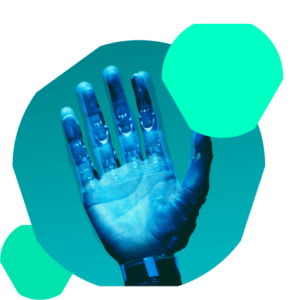Reflecting on our journey through the positive influence of AI in our work and professional landscapes, a compelling narrative emerges. Our deep dive into the distinctive roles of AI in finance and creative fields has revealed its power to streamline operations, improve risk analysis, revolutionize trading, and build an intriguing nexus of technology and creativity. We’ve examined how AI is propelling human capabilities, increasing productivity, and cultivating innovation in ways we’re only beginning to comprehend.
In the realm of finance, it’s clear that AI is a revolutionary force, offering process automation, enhanced risk analysis, and advanced tools for fraud detection and algorithmic trading. This disruptive technology is overhauling traditional processes, altering business models, and paving the way for unprecedented possibilities.
Similarly, the creative industry is feeling the transformative touch of AI. In this context, AI transcends its role as a mere tool to become a collaborator, unveiling new facets of creativity and establishing captivating frontiers for human-AI partnerships. In some instances, AI is even stepping into the shoes of the creator, with AI-generated art and music pushing our conventional understanding of ‘creativity’ to its limits.
Beyond these specific industry examples, the potential of AI to amplify human efficiency and productivity is undeniable. From streamlining workflows to empowering intelligent decision-making, AI is liberating human resources, allowing us to concentrate on strategic, inventive, and problem-solving tasks.
Additionally, AI is a robust catalyst for innovation, delivering solutions that are not just path-breaking, but also sustainable and fair. From its transformative role in healthcare to its contribution to the creation of smart, eco-friendly cities, AI is genuinely expanding the boundaries of the achievable.
So, what does the future hold for AI? Peering into the next half-decade, we anticipate AI becoming even more ingrained in our professional and personal worlds. Progress in AI algorithms and machine learning techniques will likely usher in more refined AI capabilities. We can foresee AI continually powering efficiency and innovation while also unfolding new opportunities and challenges.
AI is expected to take center stage in resolving some of the most urgent global issues, from environmental crises to healthcare accessibility. We might also witness the emergence of more comprehensive frameworks for AI ethics and governance, ensuring that AI’s evolution is guided by respect for human rights and the promotion of fairness.
In closing, AI is not just a passing technological fad. It’s a transformative powerhouse, capable of reshaping sectors, magnifying human potential, and driving innovative, sustainable resolutions. As we continue to chart the course of the AI revolution, one certainty stands out: the future of AI is a realm of boundless potential. However, one thing is clear! There are also risks and downsides to implementing AI at fast speeds. Therefore, our next article about AI will take a closer look at these risks to give you the power to understand the future in a transparent and rational manner!






